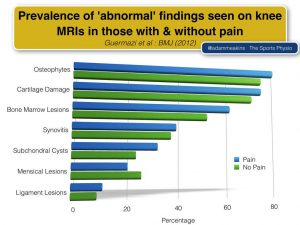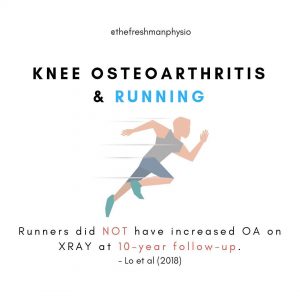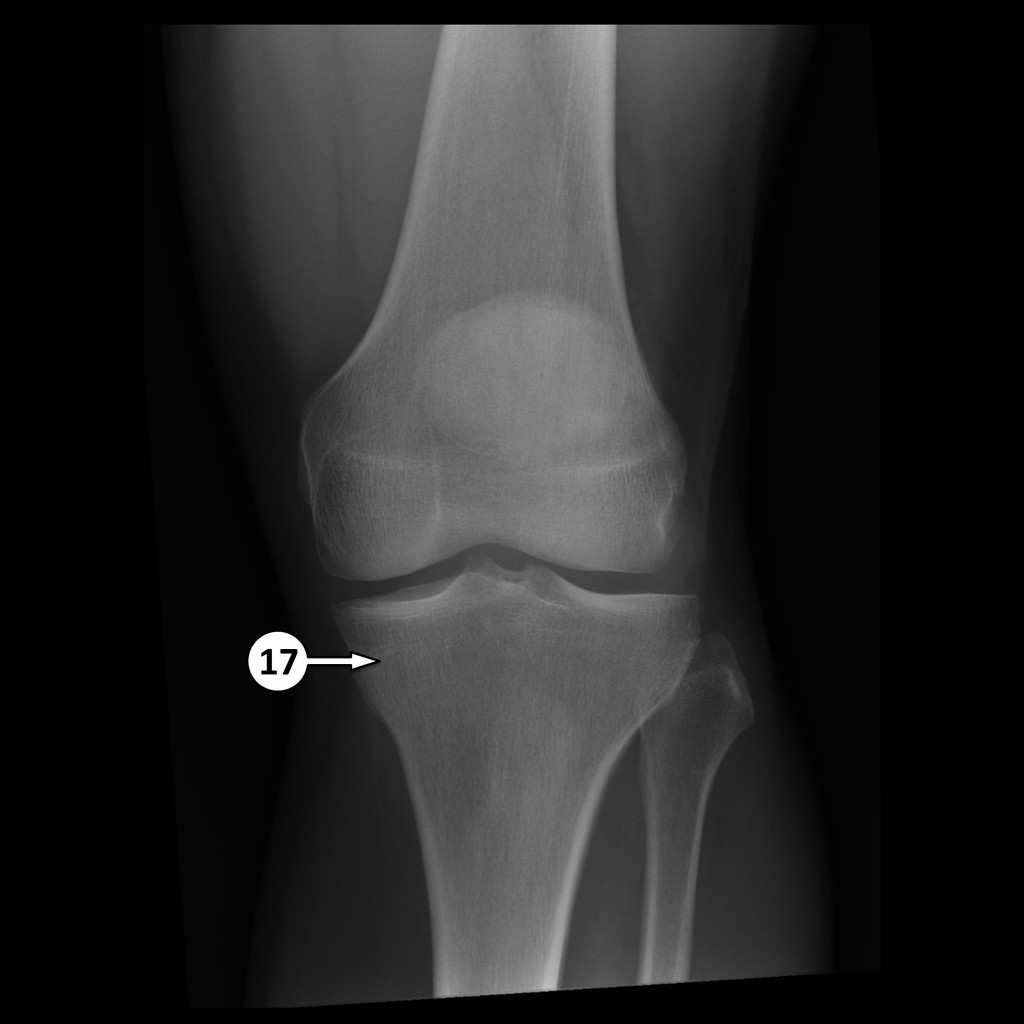There is always new emerging evidence surrounding knee Osteoarthritis (OA), this means that advice that you have been previously given may now been outdated.
Primarily, OA is not a description of your symptoms or levels of pain, it is a radiological finding. The chart below shows us the number of people who have never reported any knee pain despite having ‘abnormal’ findings appear on their x-rays. This highlights that although an x-ray may reveal OA, this is not a symptom set nor is it an indication of how your knee will be for the rest of your life.

This graph also emphasises the fact that most knee degeneration occurs also in those who display no pain or symptoms and stresses that degeneration is a normal part of the ageing process!!
Another common misconception is that running or repetitive loading of the knee will cause more ‘wear and tear’ of the knees and therefore result in more pain.
It’s great to know that recent research has disproven this theory, Lo et al (2018) stated that ‘Running does not increase symptoms or structural progression in people with knee OA’. The study shows that loading the knee is actually what maintains a health, strong joint.

If this is the case, then why am I still in pain?
Answer:
Your recent activities have exceeded the load threshold your joints can sustain. Or in simpler terms, your knees aren’t strong enough to handle the load that you are putting through them.
There are many factors that can alter your ‘load’ such as:
- Physical load- how much you do can affect your knee pain
- Body weight (Studies have shown that weight loss as little as a few Kg’s can reduce pain by up to 50%)
- The strength of the muscles surrounding your knees. This can determine how much load your joints can sustain
What should you do?
There’s no magic wand cure / simple answer to the question however it’s important to address all the factors mentioned above as well as any other contributing factors relevant to the individual patient.
The simplest place to begin is with a graded knee strength program.
When you strengthen the muscles that surround your knees, you’re increasing their ability to withstand all the load that goes through the joint all day long.
This is backed up by current research that shows ’12 weeks of exercise, reduces both knee pain and symptom progression. Out of this research the G:LAD program was developed, which is a 12 week guided and graded exercise plan, which achieved remarkable results after the duration of the program in reduction in knee pain and other relevant symptoms.
What not to do?
More often than not we see patients come in after having had a scan and some sort of injection (only a short term fix, they don’t necessarily fix the cause) or surgeries, however there is evidence that shows that there is no difference in the outcomes between surgery and physio at 24 months.
So why would you rush into surgery?
Further research shows, that surgery is no greater than placebo and that Physiotherapy and weight management is as effective in reducing symptoms and pain.
To sum up:
- it is important to seek advice and education from a health professional who is up to date with modern research
- Guided and graded exercise for a minimum of 12 weeks
- Strength work (Pilates is a great option!)
As always, if you have any questions please reach out.

